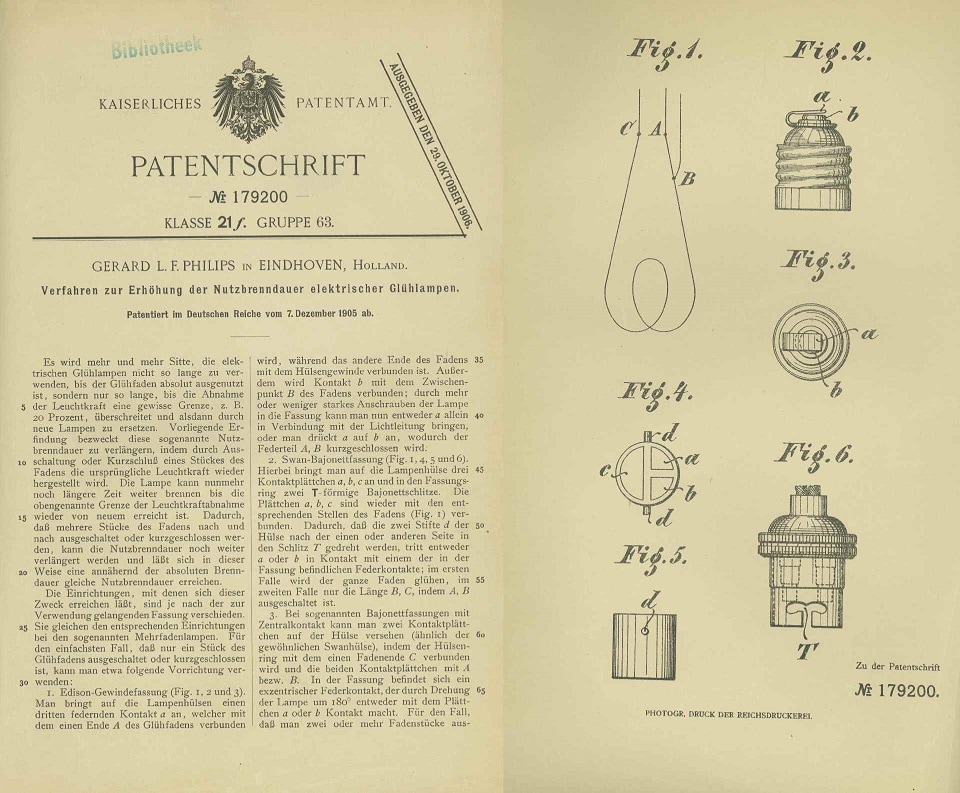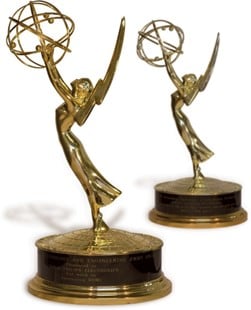Did you know that with more than 1,200 European patent applications, Philips is responsible for over 1 in 6 European patent applications submitted by Dutch companies and inventors in 2024? By the end of 2024, Philips had a whopping 50,500 patents, 30,500 trademarks and 150.000 design patents worldwide.
Protecting innovations has always been a crucial condition for Philips to be able to innovate. You can invest more time, energy, and money into innovation if other companies simply cannot run off with your ideas.
The Intellectual Property & Standards (IP&S) department is responsible for all Philips trademarks (including the Philips logo), all patents on Philips inventions, and the agreements made with other companies that have permission to sell products with the Philips brand or use Philips inventions in their products. What is now a global department of roughly 400 people began over a hundred years ago as a small group of seven colleagues.
After the company's founding in 1891, it took fourteen years before the first patent was granted to Philips. Interestingly, this did not occur in the Netherlands but in Germany. In the Netherlands, the patent law had been suspended from 1869 to 1910. With this first patent, Philips protected a 1905 invention by founder Gerard Philips, which made a light bulb last longer.

First Philips patent, 1905 In its early years, Philips was primarily active in the light bulb market. The European market was divided among several long-established companies, such as Siemens, AEG and Auer (all three form Germany), with Philips as the newcomer. In America, the market was largely dominated by General Electric (GE). In 1911, GE entered into an agreement with three German companies, allowing them access to each other's patents and to exchange technical knowledge. They also made arrangements on the number of bulbs each could sell in specific countries.
Source: Philips Company Archives
GE hoped to keep European companies out of America, but Philips could not grow further in Europe and wanted to sell more in America. Consequently, GE initiated a lawsuit against Philips. This did not lead to a ban on the sale of Philips light bulbs in the US but did provide a new insight: that Philips needed to develop and protect its own innovations. The establishment of NatLab in 1914, the precursor to Philips Research, led to numerous new innovations. In 1921, a department dedicated to patents and trademarks was founded to protect intellectual property, which was the precursor to IP&S.
Emil Hijmans was appointed in 1921 as the founder and head of the Patents and Trademarks department, as it was known then. The department was unique in the Netherlands; no other company had a department specifically dedicated to patents and trademarks. Hijmans strongly believed that the Netherlands needed to become more industrialised and that patents would play a crucial role in that development. In the first year, he hired six colleagues and travelled the world to gain insights into international patent systems and how these could be utilised by Philips.
The Patents and Trademarks department also became the guardian of the Philips logo. The original logo with three wave lines (symbolising radio waves) and four stars (symbolising light) was designed in the 1930s by Louis Kalff and used for the radio nicknamed ‘the Chapel’. This was the beginning of a logo that would remain almost inseparably associated with Philips. The current logo, featuring two wave lines, is based on this.

'The Chapel' , 1931 and the Philips-shield, 2013 Standardisation became a vital task for the department during the years Philips worked on developing cassette and video recorders, CD players, and their successors. These developments required various companies to create products that could be used together. This was only possible if the products complemented each other in a pre-designed manner (a standard). Consumers could, for example, play a CD from company A in a CD player from company B.
Source: Philips Company Archives
In developing the CD, Philips and Sony collaborated closely, believing the CD to be superior to all other products at that time (audio cassettes and vinyl records). Given the numerous competitors in this field, the CD could only succeed if every company could make CDs and CD players. Therefore, they decided to grant a licence (permission) to any interested company to use the CD standard and patented inventions for creating their own products. IP&S within Philips was responsible for developing and managing the licence programs for the CD and its successors (CD-ROM, DVD, and Blu-ray Disc) and for patent applications to protect inventions associated with these technologies.
In 2008, a new chapter began for the Philips brand. The company made a strategic decision to focus on medical technology. Several products would continue to carry the Philips logo but be housed under other companies, such as Signify (lighting), TP Vision (televisions), and Versuni (household appliances). Philips now has more than 30 companies with brand licensing agreements. There is close cooperation to ensure consumers experience the same design and user experience across all product categories and the products meet the quality standards consumers expect from a Philips product.
Over the years, various awards have been granted to Philips innovations, including a Technical and Scientific Oscar for a film projector and multiple Emmy Awards. Two of these notable statuettes were awarded in the first decade of the 21st century. In 2000, Philips received an Emmy for its contributions to MPEG Audio Layer II, a compression standard that has since been used by billions of TVs. For its role in the development of the HDMI standard for digitally transmitting video and audio to devices such as TVs and game consoles, Philips was awarded an Emmy in 2008. Nowadays, HDMI connectors are found in every TV, computer, and game console, enabling the digital transfer of video and audio with the corresponding cables.

Trivia • Octrooi means the same as a patent. You can obtain a patent for a new invention (not yet known to others) and thereby determine who may use that invention for up to twenty years. You must apply for this in each country where you wish to protect your invention. • A trademark is a (sometimes self-created) word or symbol (such as a logo) that allows you to distinguish your products from the same type of products of your competitors. • A design right is also a type of patent, but for the protection of the shape or design of a product (for example, the shape of the radio above).
Text: Freek Janssen, Poul de Haan
Source: Philips Intellectual Property & Standards, Philips Company Archives
Copyright: Koninklijke Philips N.V.

